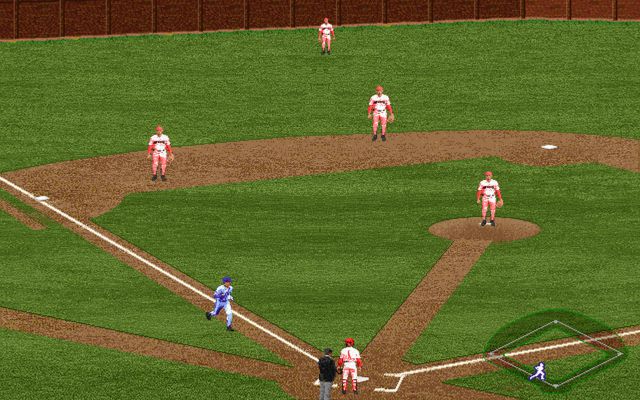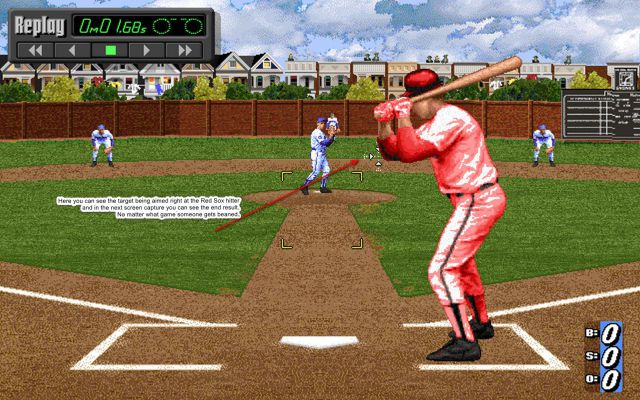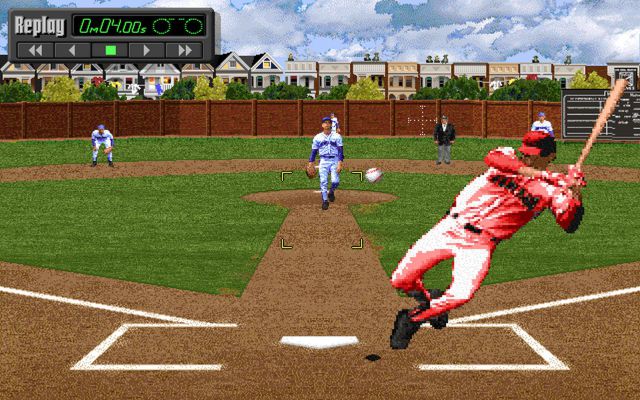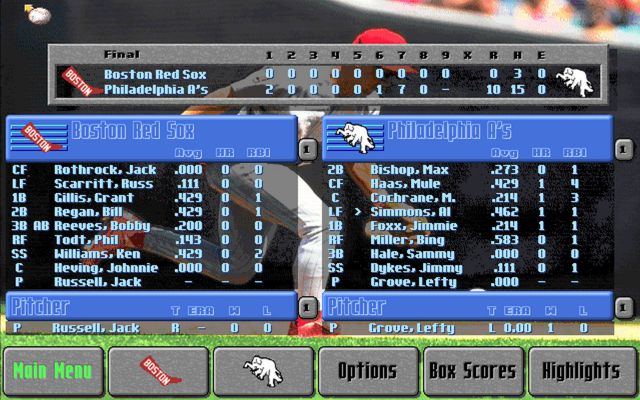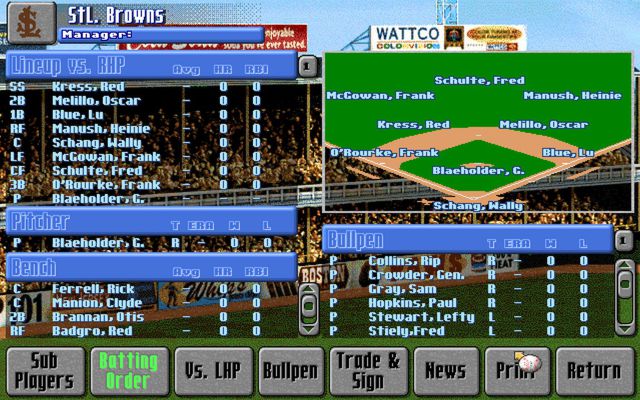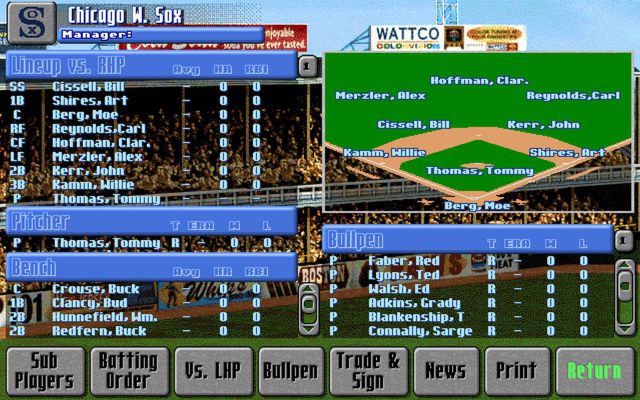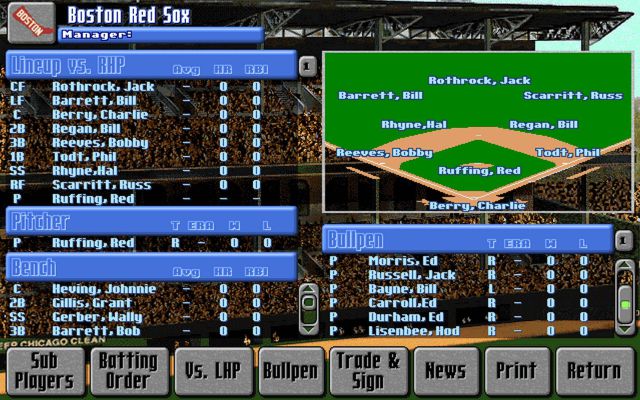-
Posts
21456 -
Joined
-
Days Won
82
Content Type
Profiles
Forums
Downloads
Everything posted by Yankee4Life
-
It will be tomorrow. 👍
-
I needed this Jim because the rest of the week won't be as easy. Friday, yes.
-
10 out of 10, 45 seconds. Surprisingly easy today. Who won the 1980 World Series? What teams played in the 1975 World Series? Now you know why I got all ten right.
-
Watch out for Muller. We have two weeks left and four days of those general questions and he is still in striking distance.
-
Sad to say only one Red Sox batter was hit. That I am very happy to say is my signature move in any baseball video game I have ever played. Crosshairs were enabled for both teams. I did not change pitchers because I was playing as Philadelpia.
-
10 out of 10, 34 seconds. I needed this little nest egg because this week may be tough on me with the general questions.
-
9 out of 10, 78 seconds. For the second time I screwed up a question and this may come back to haunt me.
-
I played a game today and I have to admit I am terrible. Forget the final score. I struck out over ten times. Mule Haas is about to cross the plate after his two-run home run in the first inning. Lefty Grove is zeroed in on a Boston batter. Let's see what happens. Hey, look at that! Another Boston batter goes down. This time from a fastball by Mr. Lefty Grove. Philadelphia had a seven-run seventh inning to win 10 - 0.
-
Of all things, 1930's Who's Who in baseball versions. However there were some players I used to fill the Red Sox or Browns roster that only pitched a few innings of ball and were out of baseball soon after. Those people I had to improvise. The good thing is that if someone knows what so-and-so threw they can easily edit it and upload a new version of the 1929.LGD My God if you met me in real life we could probably be related. No kidding. What is your native language? Because I have to tell you that you communicate very well. Extremely well. While I obviously have not worked with him on his 1998 mod I do appreciate what he has been doing on that mod. Good mods take time. I like to give two examples of this. the guy who made the 1994 season mod (one of our best by the way) took eighteen months to make it and it took OTBJoel three years to make the Legends of the Booth mod. Look how good they turned out. I am very happy to tell you that there is quite an interest in your work as well as you can see. I really, really wish I had known about this because I would have helped you. We have two groups out there that steal mods and use them like they were the ones who made them. There are some Korean modders and Latino modders who do this. i don't blame you for being upset and again I wish I could have helped. I don't care for 2k12 either. Please thank your wife for giving you that push to upload your work. She was right, people respect your work as well as you personally. So thank you Mrs. Devlin!
-
2 out of 10, 84 seconds. When you get questions like "Which cricketer is known as the Rawilpindi express?" you know you are going to do bad.
-
No big deal. I can live with this setup. You are right about that. He is the all-time St. Louis Brown. It is ok. If it is not all 1929 then that is fine. What I am going to do is when I finish I am going to mail you the new 1929.lgd and have you look at it before I let these guys have it. I am all done with the four teams you did not put players in. Now I am going to inspect my work in all of the sixteen team and then I will mail it to you. How would we import these new portraits? They look great. But now I have a question about you. I see you’ve been here since 2010. In the last few days you’ve made wonderful contributions in here. I want to thank you for this but if you wanted to you could have posted about your work earlier. There is a good number of classic gaming fans in here that even I am not aware of. I have been playing Larussa 2 for over thirty years.
-
Two things this morning. First, the completed 1929 St. Louis Browns roster. Secondly George Sisler was on the original Browns roster in the game but in 1929 he played for the Boston Braves. So I traded him to the Braves to be accurate.
-
8 out of 10, 107 seconds. Mediocre day because the time was messed up but the questions were not bad at all.
-
Not bad. Thank you. I have some too that I may upload here when I am finished with the teams. Next up the 1929 St. Louis Browns. That is for tomorrow. Now Devlin I have a question. the only difference that I see from these four installs is the season you created. For example the 1929.LGD for the 1929 season. Everything else is the same. Can I have the 1929, 1950s, mid80s-mid90s, mid90s and 2015.LGD in the same directory under one install and just choose what I want?
-
Since you had this for the 1929 league I have been concentrating on the 1929 rosters for the teams you did not do. I first checked the rosters on Oldtime baseball and baseball reference. It's not bad to do and I finished up the 1929 White Sox.
-
I got into the 1929 league and I edited one of the teams that were not completed, the 1929 Red Sox. Here is the finished product. It will take some time to look over the rest of the teams.
-
2 out of 10, 108 seconds. A good day for a Tuesday. No kidding. The only questions I got right were one baseball and one football one.
-
8 out of 10, 71 seconds. These were challenging today. The past few days I have been lucky. Tomorrow will be different.
-
A couple of things really quick Devlin. First you do a great job writing and communicating in English so don't worry about that. Secondly only in Larussa 3 and Oldtime baseball I have no joystick support. I can not figure it out. Hardball 5 does have it.
-
10 out of 10, 30 seconds. This was my best score in a very, very long time. I need it because we have those two general question days coming up and that's when I will fall back to earth.
-
I did come up with a question. How do you enable joystick sup[port in some games? Tony Larussa 3 and Oldtime baseball will not let me use one and I have DOSBOX for that.
-
It has been twenty-eight years since I was using DOS commands on a daily basis. You see back then computer users would have to switch between DOS and Windows and I liked DOS much better. Following Devlin's detailed and very helpful directions brought back some DOS memories and long story short I have all four versions working for me now. Thank you Devlin for this and your work on this. I was looking through some of the teams and they look outstanding.
-
My God I am getting close with his directions but I got to stop right now and take some Tylenol.
-
9 out of 10, 113 seconds. Yeah it looks like a good score but luck was with me today as I guessed on five of them and got them all correct.




